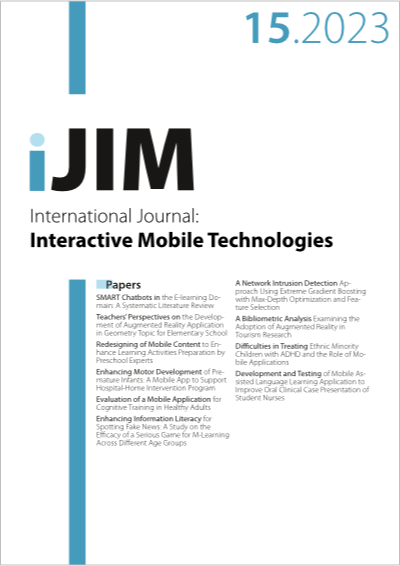SMART Chatbots in the E-learning Domain: A Systematic Literature Review
DOI:
https://doi.org/10.3991/ijim.v17i15.40315Keywords:
Artificial Intelligence, AI, NLP, Knowledge Base, E-learning, Chatbots, Natural Language ProcessingAbstract
Integrating Artificial Intelligence (AI) technologies implied significant growth in variousdomains. Furthermore, many companies integrate AI technologies into their products toenhance the quality of their services. Chatbots are among the AI technologies widely used inseveral areas, especially E-learning. Chatbots support learners in their learning processes byhelping them to find the appropriate answers to their questions. We aim to conduct a systematicliterature review (SLR) to uncover the use of AI chatbots to offload teachers from repetitive andmassive tasks. This article surveys the literature over the period 2016–2022 on the use of AIchatbots in the E-learning domain as they automatically answer learners’ questions. Thus, weidentify, collect, and synthesize multiple research studies on the application of AI chatbots in theE-learning field. Based on the renowned frameworks, PRISMA and PICO, we have succeeded in(1) Developing our research questions and (2) Automatically implementing a solution based onPython language to analyze selected papers, highlighting research gaps, and opening new windowsto guide our future works. Our study shows that chatbots effectively interact with learners.However, there are some drawbacks: (1) Educational chatbots are still limited in their localKnowledge Base (KB), which makes them unable to answer students’ questions correctly. Thus,Chatbot’s KB needs to be extended through external sources, enabling the chatbot to update itsKB over time, making it rich and saving time. (2) Lack of reliable external sources to enrich thechatbot’s KB and make it up to date. (3) Lack of educational chatbots with smart services suchas speech recognition and sentiment analysis to boost the user experience and make learningeasier. In our SLR, we discuss these limitations and propose some solutions to fill the gap.
Downloads
Published
How to Cite
Issue
Section
License
Copyright (c) 2023 KHADIJA EL AZHARI, Imane Hilal, Najima Daoudi, Rachida Ajhoun

This work is licensed under a Creative Commons Attribution 4.0 International License.


